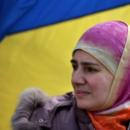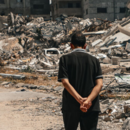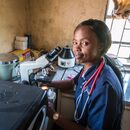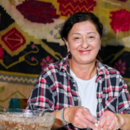Indonesia is a nation of change and growth, but it also a country where more than forty-nine percent of the population lives on less than two dollars a day (AusAID 2008).
More than sixty percent of Indonesians are engaged in agriculture as their primary source of income, but a majority of farmers operate on less than one-half acre. These facts alone create a great need for the work of development organizations, but it is the recent history of catastrophe, both man-made and natural, that has pushed Caritas Czech Republic (CCR) to invest more than five million Euros in the northern Indonesian region of Aceh over the past five years.
Aceh, in northern Sumatra, is an area that has seen a thirty-year armed conflict and the horrors of one of the worst natural disasters recorded. On December 26, 2004 life in Aceh changed forever as the waves of the Boxing Day Tsunami thundered down on the people and infrastructure of the capital city of Banda Aceh and the surrounding areas. The retreating tidal waves took with them two hundred thousand souls and the economic livelihood of this already isolated and traumatized region. In an immediate response to the situation, a second wave of international organizations and Indonesian volunteers flooded into Aceh. CCR was one of these organizations, arriving in Aceh in February 2005.
More than five years later, CCR is one of the last remaining international organizations still in Aceh, dedicated to long-term livelihood recovery through empowered community leadership. CCR has implemented projects worth more than five million Euros in Aceh and has achieved significant results in the Aceh Jaya region through its method of empowered community leadership and appropriate aqua and agro technologies aimed at sustainability and the economic independence of the targeted communities.
At the beginning of the emergency response following the Tsunami, CCR contributed to recovery efforts in reconstruction and rehabilitation of buildings and psycho-social support for survivors. It quickly became apparent that building new homes would not be enough to ensure the sustainable recovery of the community. CCR realized that efforts focused on bringing the shattered community back together in an attempt to achieve economic independence would have a better chance of making a measurable impact.
Many organizations have attempted projects aimed at livelihood recovery in Aceh, but few have achieved the same level of results as CCR. From the beginning, CCR realized that introducing new technologies in Aceh would not be enough to help communities recover from the Tsunami. CRR supported community leadership, helped establish cooperatives to support local farmers and fishermen and introduced new marketing strategies for their produce. The introduction of new technology has gone hand in hand with community development, and CCR has been able to introduce organic methods that have helped farmers and fishermen produce and sell a larger yield, creating a degree of financial security.
In addition to the Tsunami-affected regions, CCR has also expanded out into communities devastated by the armed conflict in Aceh, that culminated in a state of martial law and heavy fighting from 2002–2004. If the Tsunami had any positive impact it is that its near total destruction of the west Aceh coast made continued conflict impossible. In 2005, a peace treaty was signed bringing peace after thirty years. Until the treaty, many inland areas not affected by the Tsunami, were abandoned and the infrastructure of community had been destroyed.
The guerilla war fought in Aceh between the Indonesian Army and the Free Aceh Movement (GAM) was waged in rural villages, putting civilians in the middle. Both sides in the conflict demanded total loyalty and a brutal campaign forced communities to collaborate with one or both sides and denounce friends and neighbors. Violence, torture, kidnapping and disappearances became common place, and the society simply survived for more than thirty years. No investment took place, and most rural fields were abandoned. When the peace treaty was signed in 2005, it quickly became apparent that communities were not going to simply take up where they had left off more than a generation before.
In 2008, CCR began working in post-conflict areas to rebuild trust and community ties. At the same time, CCR began to implement training programs and the distribution of farming supplies aimed at rebuilding the knowledge that had been lost from one generation of farmers to another due to the conflict. Now, more than two years later, CCR is supporting groups of farmers who have formed into formal groups and cooperatives who are working together to ensure a better future for the entire community.
CCR now supports five cooperatives reaching more than six thousand beneficiaries across the Aceh Jaya region. Local government, community leaders, community based organizations and ordinary men and women have joined CCR in working towards an independent and secure Aceh. This area that has faced so much pain and conflict is now on the road to creating its own better tomorrow.
CCR plans to stay in the Aceh region for a minimum of eighteen additional months, while at the same time looking to expand its proven and successful model of livelihood development through community empowerment and organic technology innovations to other areas in Indonesia and South East Asia.







